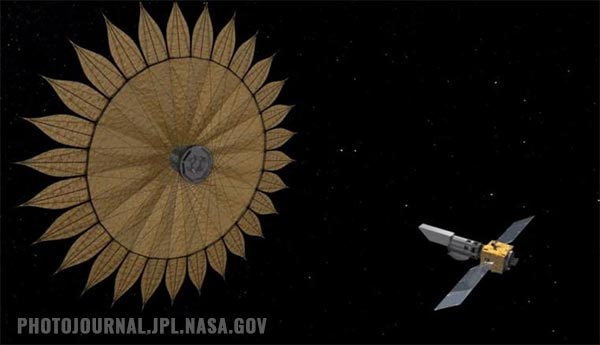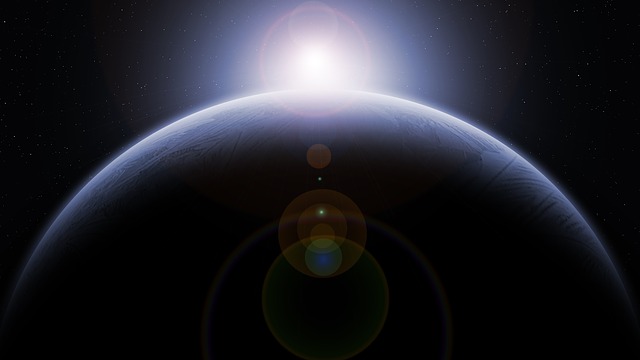
In a new paper posted in the preprint server arXiv, Janhunen proposed a "megasatellite" composed of thousands of cylindrical spacecraft that are all linked together inside a disk-shaped frame orbiting the dwarf planet Ceres – the largest object in the asteroid belt between Mars and Jupiter.
Each of these cylinders can accommodate more than 50,000 people, support an artificial atmosphere, catch sunlight and generate an Earth-like gravity through the centrifugal force of its own rotation, according to Janhunen.
This staggering project will take years to build, but Janhunen is optimistic that the first human settlers can start heading to Ceres within the next 15 years, LiveScience reported. But scientists pointed out that technological constraints on top of other limitations would make it hard to realize Janhunen's vision.
What the disk world looks like
According to Janhunen, each cylinder of the megasatellite would measure around 6.2 miles long and 1.2 miles wide. It could comfortably hold around 57,000 people and would be attached to a disk next to neighboring cylinders through powerful magnets. New cylinders could also be added to the edges of the disk, allowing for expansion.
"Mars' surface area is smaller than Earth's, and consequently it cannot provide room for significant population and economic expansion," Janhunen said. But a Ceres colony "is growable from one to millions of habitats."
A cylinder will produce its own gravity by completing a rotation every 66 seconds. This rotation will generate the centrifugal force needed to simulate Earth-like gravity, allowing young settlers to grow into healthy adults.
Long-term exposure to low gravity can shrink muscle and bone mass, which is one drawback of colonizing low-gravity planets like Mars.
"My concern is that children on a Mars settlement would not develop to healthy adults due to the too-low Martian gravity … Therefore, I searched for [an] alternative that would provide [Earth-like] gravity but also an interconnected world," Janhunen said. (Related: Scientists say the Moon and Mars may have lava tubes so large, they could be used as permanent base structures for colonization.)
Part of each cylinder is allotted to growing crops and trees in a 5-foot-thick bed of soil derived from raw materials from Ceres. Each disk is equipped with two enormous glass mirrors angled at 45 degrees relative to the disk in order to reflect sunlight. The remaining areas will rely on artificial light to simulate a day/night cycle.
Janhunen said that Ceres is the ideal location for an orbiting space colony. Its average distance from Earth is comparable to that of Mars, making travel relatively easy. The dwarf planet is also rich in nitrogen, which is critical in developing the settlement's atmosphere. Humans can build space elevators to transfer raw materials from the planet directly up to the orbiting habitats, according to Janhunen.
Megasatellite will take a long time to build
Janhunen's proposal has precedents, but several limitations undermine his grand vision. In 1976, Princeton University physicist Gerard K. O'Neill published a book about a torus-shaped space colony called an "O'Neill cylinder."
This hulking spacecraft has three strips of land stretching along its interior, interspersed by equal-size strips serving as giant, sealed "windows." Like Janhunen's cylinder, an O'Neill cylinder also completes a rotation in under two minutes to generate Earth-like gravity.
However, building such a massive structure is difficult. Astrobiologist Manasvi Lingam of the Florida Institute of Technology, who was not part of the study, said that while Janhunen's proposal offers a "plausible alternative" to Mars or moon colonization, it overlooks key considerations.
"I would say there are three main caveats … The first is a question of other essential elements, other than nitrogen," Lingam told LiveScience. Phosphorus, for example, is needed by the body to create DNA and other cell components. But Janhunen did not explain where to obtain this element, according to Lingam (Janhunen also did not specify where the settlement's oxygen will come from).
Lingam added that collecting nitrogen and other raw materials from Ceres would require advanced technology. While mining the planet is plausible, scientists still have a way to go before they successfully develop the right equipment. (Related: Elon Musk: Mars must be colonized as a potential escape route in case of WW3.)
That said, building Janhunen's megasatellite would take a long time, according to Lingam. Janhunen suggested that the first cluster of orbiting habitats can be completed 22 years after mining begins on Ceres. But this estimate assumes that the settlement's power supply grows exponentially each year.
"That timescale of 22 years might be the lower bound under optimal conditions, but I'd argue that the real timescale could be a lot longer," Lingam said.
Sources include:
Please contact us for more information.


















